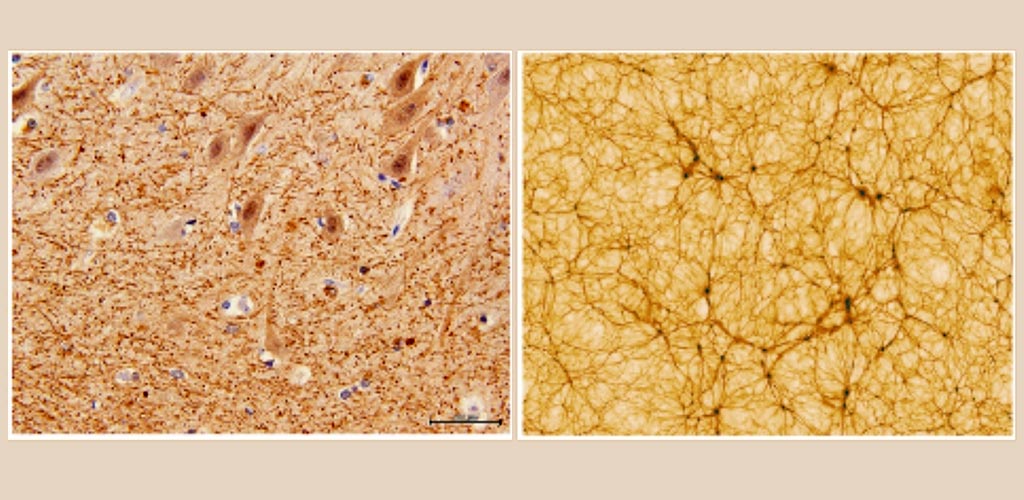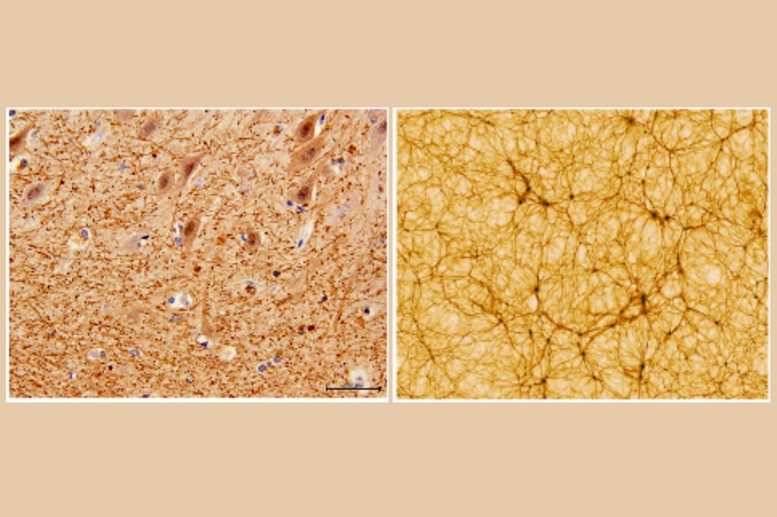
[ad_1]

Left: section of the cerebellum, with magnification factor 40x, obtained with electron microscopy (Dr. E. Zunarelli, University Hospital of Modena); right: section of a cosmological simulation, with an extension of 300 million light years on each side (Vazza et al. 2019 A&A). Credit: University of Bologna
In their article published in Frontiers of physics, Franco Vazza (astrophysicist at the University of Bologna) and Alberto Feletti (neurosurgeon at the University of Verona) studied the similarities between two of the most challenging and complex systems in nature: the cosmic network of galaxies and the network of neuronal cells in the human brain.
Despite the substantial difference in scale between the two networks (more than 27 orders of magnitude), their quantitative analysis, which lies at the intersection of cosmology and neurosurgery, suggests that different physical processes can build structures characterized by similar levels of complexity and autonomy organization.
The human brain functions thanks to its extensive neuronal network which is believed to contain around 69 billion neurons. On the other hand, the observable universe can count on a cosmic network of at least 100 billion galaxies. Within both systems, only 30% of their masses are composed of galaxies and neurons. Within both systems, galaxies and neurons arrange themselves in long filaments or knots between filaments. Finally, within both systems, 70% of the mass or energy distribution is composed of components that play an apparently passive role: water in the brain and dark energy in the observable Universe.
Starting from the shared characteristics of the two systems, the researchers compared a simulation of the galaxy network with sections of the cerebral cortex and cerebellum. The goal was to observe how the fluctuations of matter spread on such different scales.
“We calculated the spectral density of both systems. This is a technique often used in cosmology to study the spatial distribution of galaxies ”, explains Franco Vazza. “Our analysis showed that the distribution of the fluctuation within the neuronal network of the cerebellum on a scale of 1 micrometer to 0.1 millimeters follows the same progression as the distribution of matter in the cosmic network but, obviously, on a larger scale. ranging from 5 million to 500 million light years “.
The two researchers also calculated some parameters that characterize both the neuronal network and the cosmic network: the average number of connections in each node and the tendency to group multiple connections into relevant central nodes within the network.
“Once again, structural parameters have identified unexpected levels of agreement. Probably, the connectivity within the two networks evolves following similar physical principles, despite the notable and evident difference between the physical powers that regulate galaxies and neurons ”, adds Alberto Feletti. “These two complex networks show more similarities than those shared between the cosmic network and a galaxy or a neuronal network and the interior of a neuronal body.”
The encouraging results of this pilot study are leading researchers to think that new and effective analytical techniques in both fields, cosmology and neurosurgery, will allow for a better understanding of the dynamics underlying the temporal evolution of these two systems.
This study was published in Frontiers of physics with the title “The quantitative comparison between the neuronal network and the cosmic network”. Its authors are Franco Vazza of the Department of Physics and Astronomy of the University of Bologna and Alberto Feletti of the Department of Neuroscience, Biomedicine and Movement of the University of Verona.
Reference: “The Quantitative Comparison Between the Neuronal Network and the Cosmic Web” by F. Vazza and A. Feletti, 16 November 2020, Frontiers of physics.
DOI: 10.3389 / fphy.2020.525731
[ad_2]
Source link